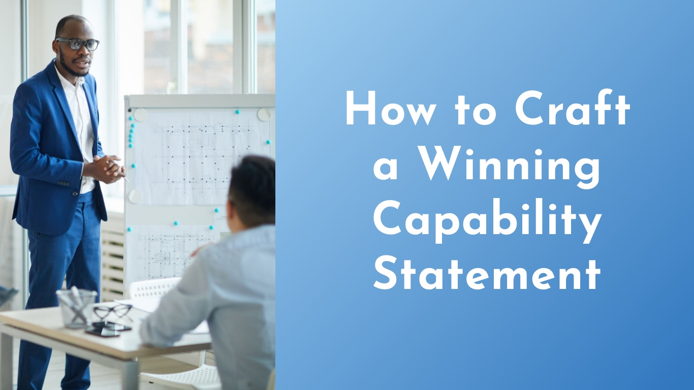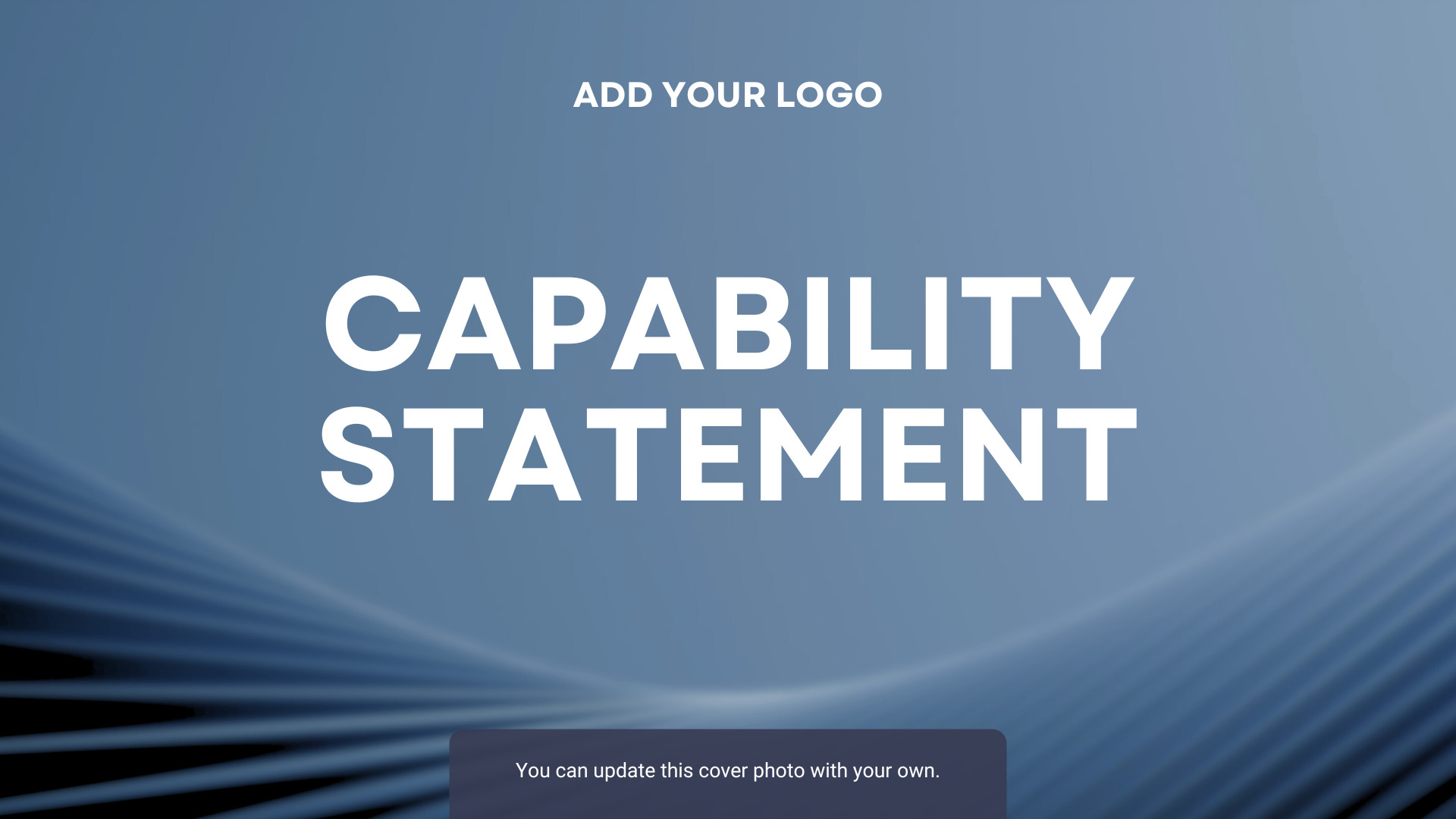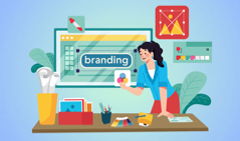Whenever you submit your business for a new competitive position, be it a private tender or a government contract, agencies and enterprises expect you to present a certain document. This resume of sorts is called a capability statement, and it provides a snapshot of your company—who you are, what you can do, and what makes you stand out from the crowd.
In this article, we'll explore what you should or shouldn't put on your capability statement, look at examples, and guide you toward winning design and content.
What Is a Capability Statement?
A capability statement is a written document that you use to show government buyers and independent contractors why they should be interested in working with you. Essentially, it's a summary of your company that provides all the key information about it. Capability statements are crucial for making a great first impression when meeting with small business professionals, networking with prospective B2B clients, or attending conferences and events.
In a sense, a capability statement is a marketing material that effectively positions you among competitors. While it has to be concise and honest, its main purpose is to sell and to showcase your unique strengths to potential customers. By highlighting main capabilities, past work, and formal certifications, a well-crafted statement drives more business your way.

A capability statement excerpt.
Traditional company capability statements tend to be short—one or two pages, but the length isn't strictly fixed, especially when you apply for projects outside the government landscape. In these scenarios, the statement format can be more flexible to demonstrate the full range of your company's accomplishments. Say, a digital capabilities brochure made from the usual PDF, and backed with videos and other interactive elements for higher engagement.
Ideally, your statement needs to be a living document, and it works best when you have two versions at hand: a general one and a targeted one.
- A general capability statement provides an overview of your capabilities without focusing on a specific industry, audience, or task. For instance, think of an IT company offering consulting services for construction, healthcare, and finance. If their goal is simply to raise brand awareness among government vendors and contracting officers, it makes sense to cover a broad range of capabilities in a single document.
-
A targeted capability statement is tailored to each new agency, contract, or proposal. After considering the requirements of the solicitation you plan to address, you would emphasize how your business fits the bill—with relevant cases and skills. In our example, for a hospital in need of data protection services, the IT company would only list their capabilities and past projects in healthcare cybersecurity.
Why You Need a Capability Statement
In many ways, a capability statement is like a resume that gets you in the door for meetings with federal buyers or B2B customers. Agencies and companies seeking contractors use these documents as a baseline for evaluating potential partnerships and fostering win-win collaborations in the future. And for you as a business, it's ultimately a sales tool that wins new clients.
Creating a capability statement can have far-reaching benefits on top of securing government contracts. The process forces you to nail down your core competencies, rethink unique selling points, and clearly define differentiators. And once you articulate your expertise, you can use the discovered insights to recruit new talent, refine your brand story, or pitch your services to clients in the private sector.
Targeted capability statements require some effort to craft and update, but they are usually more effective in face-to-face pitches. Typically, you would email the document as a PDF prior to the meeting—to demonstrate how your company's expertise aligns with the nuances of the job to be done, and prove you're worth the time.
On the contrary, you may present your general capability statement to anyone at any time: as a printed copy at conferences or business matchmaking events, a direct link you can quickly send, a website embed, or a saved copy within an app on your phone. By the way, turning your PDF statement into an online flipbook will open up all the digital sharing options at once.
What to Include in Your Capability Statement
1. Corporate data. State your registered company name or DBA (Doing Business As), as well as the year and state of incorporation. Make sure to include your logo with a backlink to your website. It's also a common practice to mention your size and status—whether you're a women-owned or a service-disabled veteran-owned small business, a part of the HUBZone program, etc.
2. Tagline and short summary. Give a brief description of the company's history, mission, and values, or sum it up with a catchy heading. Think of this as an elevator pitch: the shorter, the better, and put forward your tangible achievements.
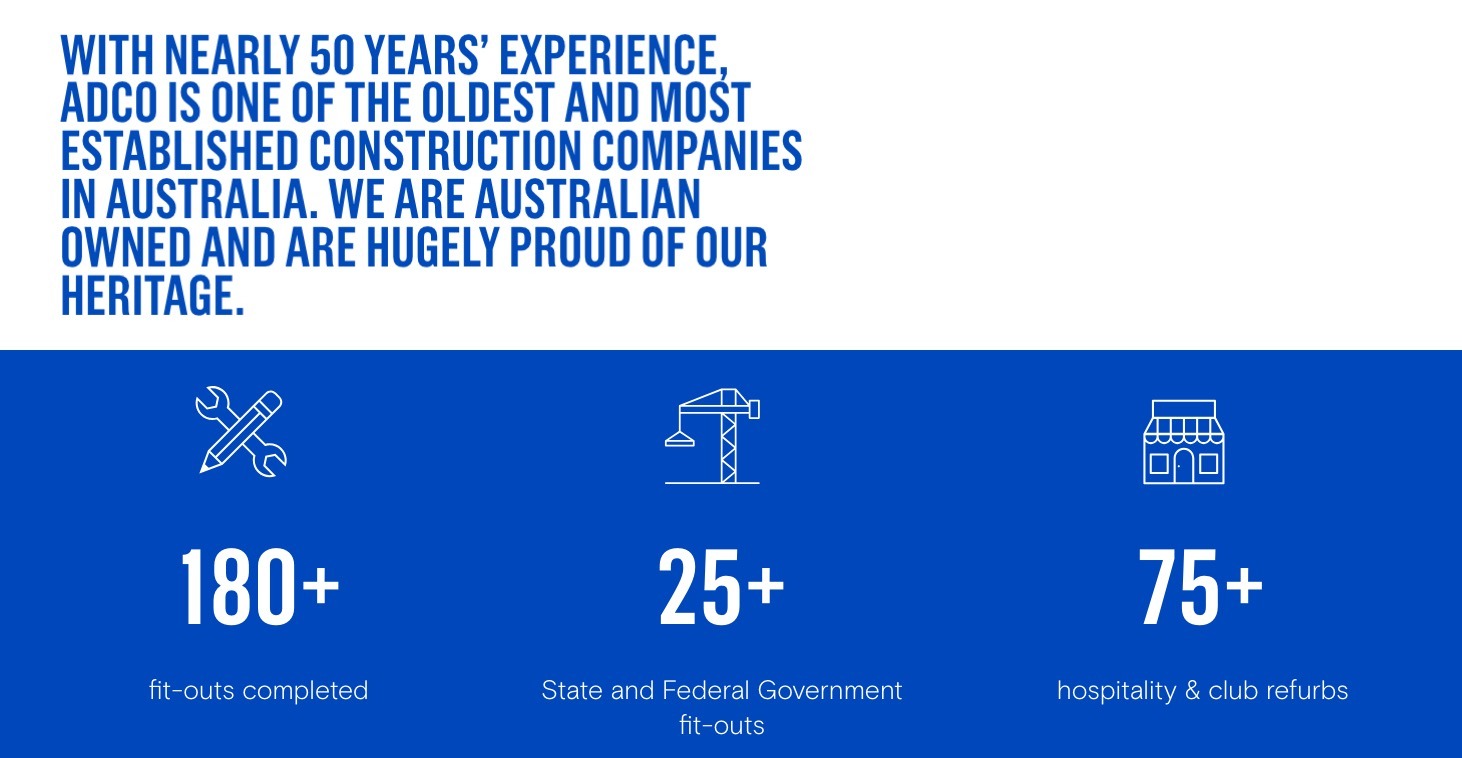
Construction capability statement example. Source: ADCO.
3. Core competencies. Depending on your chosen capabilities statement type, provide the whole range of competencies or select the ones that relate to your target customer. Use bullet points or charts so that the reader can quickly scan the list and recognize their need.
4. Past performance. Showcase past commercial or government customers for whom you've done similar work: their names, locations, and contacts for references. Consider adding a timeline so that agencies can see which projects are recent, or listing the size and length of the job—this conveys a lot about your scope.
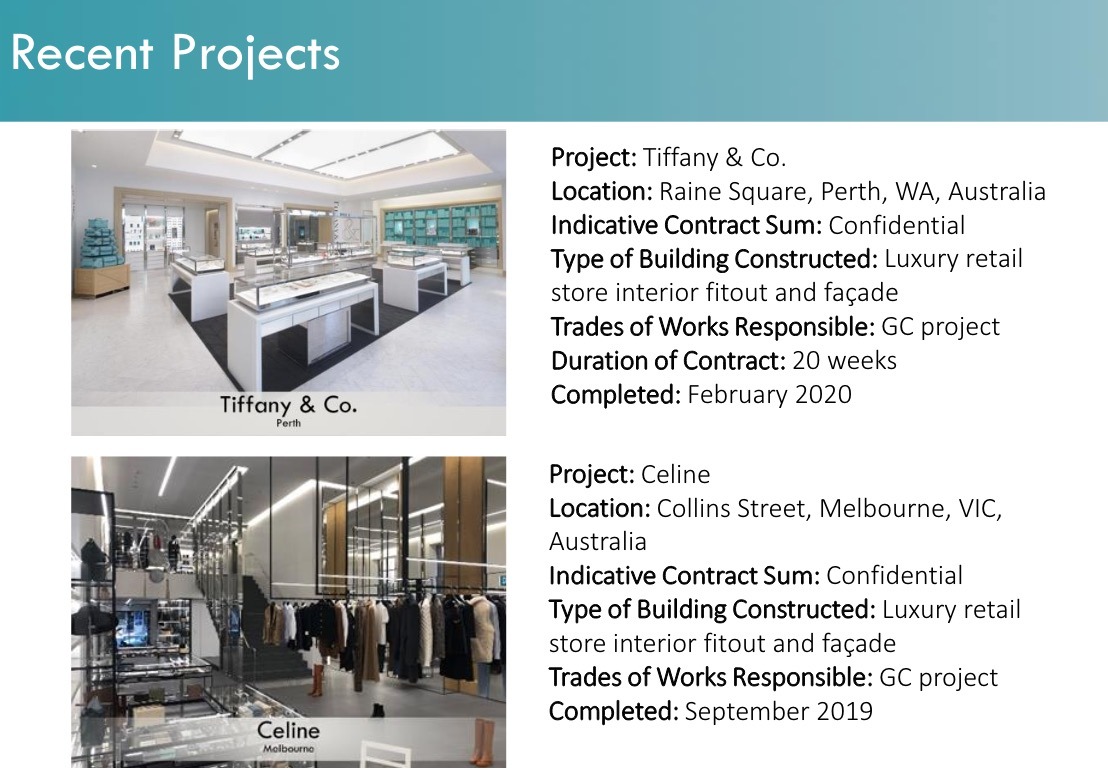
Real estate capability statement. Source: Projects Queensland.
5. Differentiators. In this section, you need to highlight the advantages of working with your business. What really sets you apart? Is it niche expertise, top-notch software, or innovative equipment? You might have government or state certifications, GSA contract vehicles, prestigious awards, or a high insurance or bonding capacity. Uncommon skills or security clearances among the staff make for great differentiators. Technical licenses also count.
6. Your codes. If you're an American business, these would be your NAICS codes that define specialization, and your UEI (formerly DUNS) and CAGE codes for identification purposes. Including official numbers immediately lets the buyers know that you are properly registered in the federal vendor database.
7. Contact information. It's best to list a name, cell number, and business email of the point of contact, so that potential clients can easily reach out to discuss collaboration opportunities.

A simple footer example for a capability statement. Source: Healthcare Management Solutions.
If your capability statement doesn't need to be short, you may enhance it with other elements:
8. Key personnel. Feature professional profiles for top management: their name, role, experience, and qualifications—for more transparency and credibility.
9. Products and services. Provide a description of your products and services, with an emphasis on how your solution will address contract requirements.
10. Community involvement. Going beyond business activities may resonate with clients who prioritize working with socially conscious organizations.
Keep in mind that most government employees or business owners receive dozens of capability statements each week. The submitted presentations are often used to weed out contract applicants, so having a pitch that captivates visually and covers all the necessary topics can be a deal-breaker.
How to Write Your Capability Statement and Make it Stand Out
#1 Prepare the Content
Follow the list above to ensure that your capability statement includes all the essentials: past performance or case studies, contact information, certifications, core competencies, and any relevant awards or recognitions.
If you plan to submit your statement for government contracts, take a look at these official resources and examples to guide you:
- Sample capability statement by the U.S. Department of Health and Human Services;
- Capability statement example by the UK Department of Health & Social Care;
- Capability statement essentials by the U.S. Small Business Administration.
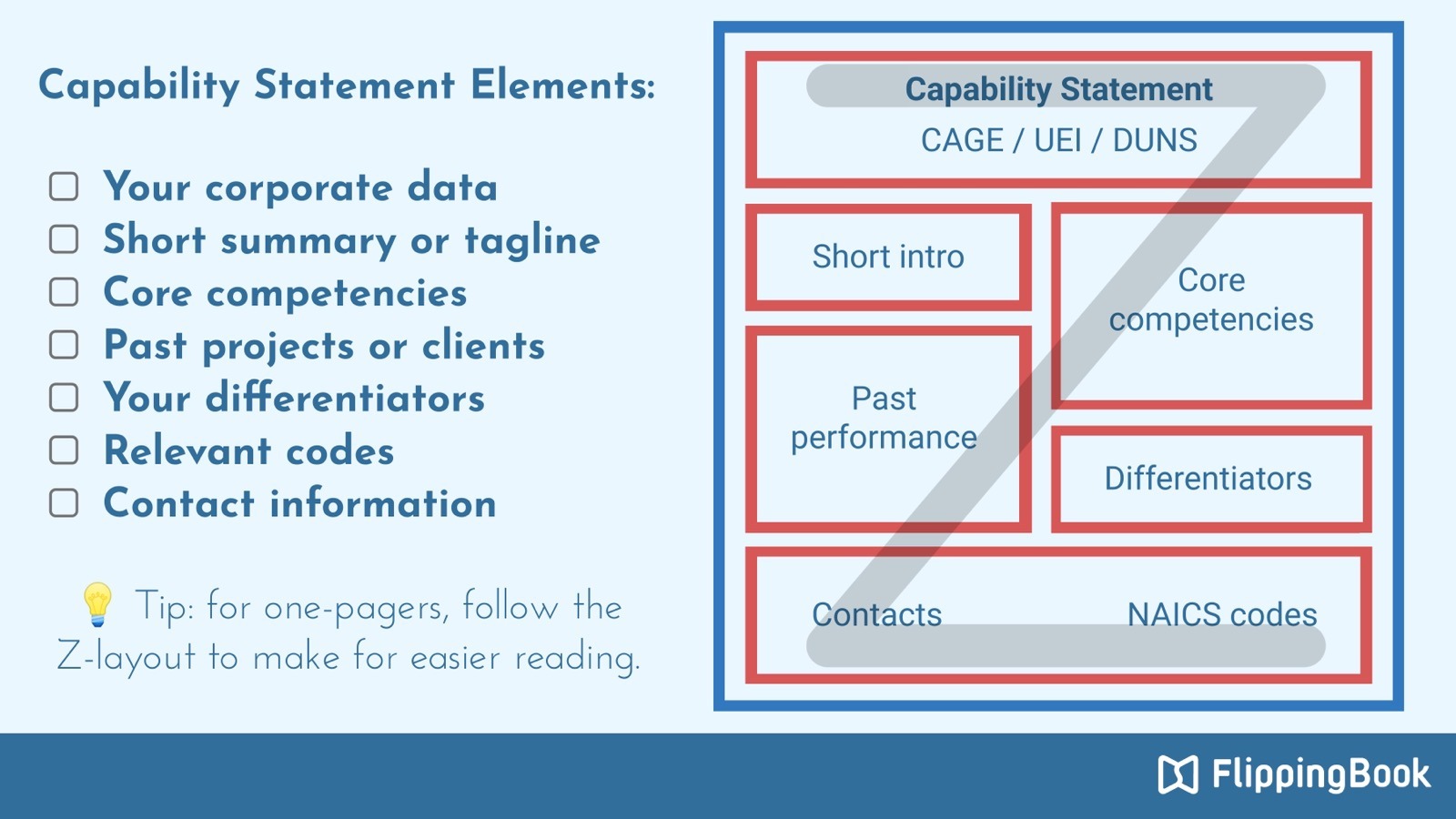
For capability brochures that have several blocks and 10+ pages, consider adding a table of contents for easier navigation. Use consistent fonts, colors, and graphics. Lastly, incorporate your logo to align the presentation with your company's branding.
#2 Choose an Appropriate Format
You can stick to the traditional text-based document, especially for capability statements that might be subject to automated tracking systems, similar to how large corporations process applicant resumes. If that is the case, opt for a Word file and convert it into a plain PDF before sharing your statement with an agency.
Alternatively, if you have more creative freedom and want to make a lasting impression, try using a flipbook. Flipbooks are HTML5 publications made on the base of PDF files. On top of your statement content, flipbooks offer a dynamic and interactive way to showcase the company's strengths. You can incorporate on-page videos for client testimonials or team presentations, animate numbers to draw more attention to key metrics, and brand the statement to reflect your business identity.
Flipbooks are mobile-optimized by default, making it convenient for potential clients to access your statement on the go. You'll also notice the smooth page flip effect that adds a nice finishing touch to your statement.
Want to create an eye-catching capability statement like this?
#3 Review and Update Regularly
Even if you only have a general capability statement that you don't have to adapt for each proposal, it still makes sense to revisit it from time to time. Keep it current and relevant, and reflect any changes in your company's offerings, achievements, or industry trends.
For targeted capability statements that you customize, you can focus more on researching the requirements for the potential project to increase your chances of success.
Capability Statement Template from Canva
When you're not sure where to start or want some inspiration to create a professional-looking statement, turn to Canva. With hundreds of free templates for different industries, you're bound to find something suitable for your use case. You can also try searching for business proposal or company presentation templates—their structure is very similar to what a capability statement needs to have.
And you can continue editing your template seamlessly by turning it into a flipbook right from Canva—to add interactivity, share the statement, and start tracking it right away.
Final Tips to Create a Winning Capability Statement
- Experience is just one piece of the puzzle–don't let it hold you back. If you want to break into the government sector, but have never done federal work before, it's okay to list your commercial B2B projects or other regular jobs. But in this case, your capability statement design has to be on point. Include videos with customer testimonials, add image galleries with photos of your past performance—make the proposal as interactive and convincing as possible.
- Put your capability statement out there and keep an eye on how it spreads. Upload your general statement to your profile in the small business procurement databases you're registered in. Add it to your business LinkedIn page, upload it to your website—you never know where new customers might be looking for contractors. To measure impact, track how far your PDF spreads.
- Share facts strategically to spark curiosity without revealing too much. A capability statement is not a full-disclosure document, it's merely a conversation starter, so you are not obliged to share any confidential information or figures from classified projects. For instance, you definitely shouldn't put your EIN—the federal tax identification number—on any public paperwork, which is a common mistake. To take content protection a step further, look into ways to lock your PDF from editing and copying.
Now that you know how to write a capability statement and what makes it an essential element of your marketing and sales collateral, we wish you the best of luck in your future contract search.

